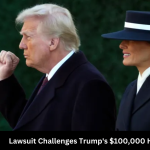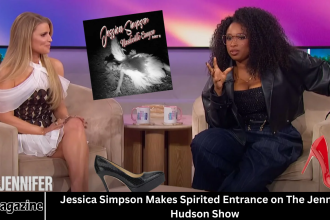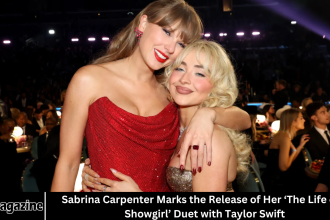In a dramatic clash between a pillar of American journalism and a prominent Hollywood figure, The New York Times Company has filed a defamation lawsuit against actor and director Justin Baldoni, along with the production companies behind the highly anticipated film adaptation of Colleen Hoover’s It Ends With Us.
- The Core of the Controversy: What Sparked the Lawsuit?
- The New York Times Article: “On the ‘It Ends With Us’ Set, a Director’s Kiss Lands Off-Script”
- The Aftermath: From Unhappiness to Alleged Retaliation
- The Lawsuit’s Specific Allegations: Deconstructing the “Smear Campaign”
- 1. Accusations of Fabrication and Unethical Journalism
- 2. Attacking the Reporter’s Integrity
- 3. The “Hit Piece” Narrative and Coordinated Effort
- The Legal Hurdles: Can The New York Times Win a Defamation Case?
- Broader Implications: A Precedent-Setting Case
- For Journalism and Press Freedom
- For Hollywood and Public Relations
- For the “It Ends With Us” Film and Brand
- Frequently Asked Question
- What is the lawsuit about, in simple terms?
- What was the original New York Times article about?
- Why is The New York Times suing for defamation? Isn’t that unusual?
- What does The New York Times hope to achieve? Are they seeking money?
- What is Justin Baldoni’s defense likely to be?
- What are the potential implications of this case?
- What is the key legal hurdle The New York Times must overcome?
- Conclusion
This legal battle, unfolding in New York Supreme Court, is more than a simple dispute; it’s a high-stakes confrontation over truth, reputation, and the power of narrative in the digital age.
The lawsuit alleges that Baldoni and his team orchestrated a “smear campaign” against the newspaper and one of its reporters, Sopan Deb, in retaliation for an article they found unflattering. This case presents a fascinating inversion of the typical defamation dynamic, where a media giant is usually the defendant.
More Read: Lauren Graham Honored With Hollywood Walk of Fame Star Alongside Gilmore Girls Castmates
The Core of the Controversy: What Sparked the Lawsuit?
To understand the lawsuit, we must first examine the event that triggered it: the publication of a New York Times article on May 2, 2024.
The New York Times Article: “On the ‘It Ends With Us’ Set, a Director’s Kiss Lands Off-Script”
Reporter Sopan Deb’s piece was a behind-the-scenes look at the production of It Ends With Us, a film that has generated immense buzz due to the popularity of Colleen Hoover’s bestselling novel. The central incident described in the article involved the film’s director and male lead, Justin Baldoni.
According to Deb’s reporting, during a rehearsal for a kissing scene with co-star Blake Lively, Baldoni proposed an exercise where they would kiss “a little bit” to foster a “safe environment.”
The article quoted two anonymous sources who were present and felt the request was “highly unprofessional” and made Lively and others on set visibly uncomfortable.
The piece did not allege any illegal conduct but framed the incident within broader Hollywood conversations about intimacy coordinators and on-set power dynamics.
The Aftermath: From Unhappiness to Alleged Retaliation
The New York Times claims that Baldoni and the producers of It Ends With Us were deeply unhappy with the article.
The lawsuit asserts that rather than pursuing a standard correction or writing a letter to the editor, they engaged in a coordinated effort to discredit the reporting and the reporter.
The defendants allegedly made a series of public and private statements accusing Sopan Deb and The New York Times of publishing “false,” “defamatory,” and “irresponsible” claims.
They are accused of claiming the story was a “hit job” and that Deb had acted unethically. The lawsuit points to statements made by Baldoni on his Instagram account, as well as communications from the production companies—Wayfarer Studios (co-founded by Baldoni) and Sony Pictures Entertainment.
The Lawsuit’s Specific Allegations: Deconstructing the “Smear Campaign”
The New York Times’ legal filing is a detailed document that lays out its case point by point. It does not seek monetary damages for the initial article’s impact but focuses on the alleged damage to its reputation caused by the defendants’ subsequent actions.
1. Accusations of Fabrication and Unethical Journalism
The core of the defamation claim rests on the defendants’ repeated assertions that the Times’ story was “false.
” The lawsuit contends that these statements are themselves false and were made with “actual malice”—a key legal term in defamation law meaning the speaker knew the statement was untrue or acted with reckless disregard for the truth.
The Times stands by its reporting, citing two independent, corroborating sources who were on set.
They argue that Baldoni’s denial, while his perspective, does not make the original report a fabrication. By labeling verified journalism as “false,” the lawsuit claims the defendants are knowingly spreading a falsehood to punish the newspaper.
2. Attacking the Reporter’s Integrity
A significant portion of the lawsuit focuses on the alleged attacks on Sopan Deb’s character and methods. The defendants are accused of claiming that Deb acted unprofessionally and misrepresented himself.
The Times provides evidence, including email correspondence, to show that Deb identified himself as a journalist and that his reporting was conducted transparently.
By portraying Deb as a rogue actor who engaged in deceptive practices, the lawsuit argues the defendants were intentionally undermining the credibility of both the journalist and the institution he represents.
3. The “Hit Piece” Narrative and Coordinated Effort
The use of terms like “hit piece” and “smear campaign” is central to the lawsuit’s narrative. The Times alleges this was a strategic and coordinated effort by Baldoni and the production companies to control the public narrative.
By framing the article as a malicious attack rather than a piece of standard entertainment journalism, they allegedly sought to mobilize fans and public opinion against the Times, thereby applying pressure and damaging the newspaper’s reputation for accuracy and fairness.
The Legal Hurdles: Can The New York Times Win a Defamation Case?
For The New York Times to succeed, it must overcome several high legal barriers, many of which were established by landmark Supreme Court cases it famously championed.
The “Actual Malice” Standard
As a public figure (a standard that likely extends to major corporations like Sony and high-profile individuals like Baldoni), The New York Times itself must prove that the defendants acted with “actual malice” as defined in New York Times Co. v.
Sullivan (1964). This means they must show Baldoni and the producers either knew their statements accusing the Times of lying were false or that they made them with a reckless disregard for the truth.
This is a deliberately high bar, designed to protect robust public debate.
The Times will argue that the defendants knew their characterization of the article as “false” and “fabricated” was inaccurate because they were aware the story was based on credible sources. They will point to the coordinated nature of the response as evidence of a deliberate, malicious intent to harm.
Truth as a Defense
The defendants’ strongest defense will be the truth. If they can demonstrate that the events described in the original New York Times article did not happen as reported, or that the accounts of the anonymous sources are not credible, then their statements calling the article “false” would be protected.
This will likely become a “battle of the sources.” The Times has its two anonymous witnesses.
Baldoni and the production companies will present their own witnesses, including potentially Blake Lively and other crew members, to testify that the incident either did not occur or was misinterpreted.
The Distinction Between Fact and Opinion
Some of the defendants’ statements, like calling the article a “hit piece,” could be argued as hyperbolic opinion rather than assertions of fact. However, statements like “the story is false” are definitive claims of fact.
The court will have to determine which of the alleged defamatory statements are actionable assertions of fact versus protected rhetorical opinion.
Broader Implications: A Precedent-Setting Case
The outcome of this lawsuit could have ripple effects far beyond the parties directly involved.
For Journalism and Press Freedom
If The New York Times prevails, it would send a powerful message that news organizations can legally push back against coordinated campaigns to discredit legitimate reporting.
In an era of widespread attacks on the media as “the enemy of the people,” a win for the Times could reinforce the principle that journalists should not be intimidated when reporting on powerful entities.
Conversely, some free speech advocates might worry that a victory for the Times could have a “chilling effect,” making individuals and companies more hesitant to criticize media outlets for fear of being sued.
For Hollywood and Public Relations
This case is a masterclass in what not to do when facing negative press, according to many crisis communications experts.
The lawsuit alleges that the defendants’ aggressive, confrontational strategy backfired spectacularly, transforming a one-day news story into a protracted legal battle with even greater negative publicity.
The standard PR playbook often involves a measured response, a direct rebuttal, or, in some cases, ignoring the story altogether. The “smear campaign” approach alleged in the lawsuit is seen as a high-risk tactic that has now resulted in a formidable legal opponent.
For the “It Ends With Us” Film and Brand
The controversy casts an undeniable shadow over the release of It Ends With Us. The film’s themes, centered on a woman escaping a cycle of abuse, now exist in a strange juxtaposition with a real-world narrative about on-set behavior and a legal fight over truth-telling.
The marketing campaign will now have to navigate these turbulent waters, and the public’s perception of Justin Baldoni, who has built a personal brand around mindfulness and male vulnerability, is potentially at stake.
Frequently Asked Question
What is the lawsuit about, in simple terms?
In simple terms, The New York Times is suing Justin Baldoni and the film’s producers for allegedly running a “smear campaign” against the newspaper. This came after the Times published an article about an awkward incident on the set of the movie It Ends With Us, where Baldoni, the director and star, reportedly made a request to kiss his co-star Blake Lively during a rehearsal. The Times claims that instead of disputing the story through normal channels, Baldoni and the producers publicly attacked the newspaper and its reporter, accusing them of publishing false and defamatory lies, thereby damaging the Times’ reputation.
What was the original New York Times article about?
The original article, published in May 2024, was a behind-the-scenes look at the film’s production. The key incident involved Baldoni, during a rehearsal for a kissing scene with Blake Lively, suggesting they kiss “a little bit” to create a “safe environment.” The article, citing two anonymous sources present, reported that this request was seen as “highly unprofessional” and made Lively and others on set uncomfortable. It did not allege any illegal act but framed the event within ongoing Hollywood conversations about power dynamics and the role of intimacy coordinators.
Why is The New York Times suing for defamation? Isn’t that unusual?
It is highly unusual. Typically, media organizations like The New York Times are defendants in defamation lawsuits, as they are the ones publishing the stories. In this case, the Times is the plaintiff, arguing that the false accusations made against them by Baldoni and the producers are themselves defamatory.
Their core argument is that the defendants’ statements—calling the verified journalism “false,” “irresponsible,” and a “hit piece”—were knowingly untrue and made with a “reckless disregard for the truth,” which is the legal standard for defamation when a public figure is involved.
What does The New York Times hope to achieve? Are they seeking money?
According to the lawsuit, The New York Times is not seeking monetary damages for the initial story’s impact. Instead, they are seeking a “declaratory judgment” from the court. This means they want a judge to officially declare that their original article was substantially true and not defamatory.
Their goal is to legally clear their name and their reporter’s reputation, and to stop the alleged smear campaign. It’s a principled stand to affirm the accuracy of their journalism and push back against what they see as an attempt to bully and discredit them.
What is Justin Baldoni’s defense likely to be?
Baldoni and the producers will likely base their defense on the principle that their statements were true. They will argue that the original Times article was indeed false and misleading. To prove this, they may:
- Present their own witnesses from the set (potentially including Blake Lively) to contradict the accounts of the Times’ anonymous sources.
- Argue that the incident was misinterpreted or taken out of context.
- Claim that some of their critical statements (like calling the article a “hit piece”) are protected expressions of opinion, not assertions of fact.
- They will also argue that the Times cannot prove “actual malice,” meaning they knew their denials were false or acted with reckless disregard for the truth.
What are the potential implications of this case?
This is a high-profile case with significant potential implications:
- For Journalism: A win for The New York Times could empower news organizations to legally defend themselves against coordinated campaigns to discredit legitimate reporting. A loss could encourage more powerful subjects of stories to use aggressive public attacks as a weapon against the press.
- For Hollywood & PR: The case serves as a stark lesson in crisis management. The aggressive strategy allegedly employed by the production is now the subject of a major lawsuit, demonstrating the risks of publicly accusing a major news outlet of fabrication.
- For the Film: The lawsuit casts a shadow over the marketing and release of It Ends With Us, forcing the public to view a romance film through the lens of a real-world controversy about on-set behavior and a legal battle over truth.
What is the key legal hurdle The New York Times must overcome?
The key legal hurdle is proving “actual malice.” Since Baldoni and the production companies are public figures, the Times (as the plaintiff) must convince the court that the defendants made their false statements knowing they were untrue or with a reckless disregard for whether they were true or false.
Conclusion
The lawsuit between The New York Times and Justin Baldoni is more than a legal dispute; it is a microcosm of contemporary conflicts over truth, power, and media integrity.
It pits the journalistic ethos of accountability and reporting against the public relations imperatives of image control and narrative shaping.
As the case moves through the legal system, it will be dissected by media lawyers, Hollywood executives, and First Amendment scholars.
The discovery process may reveal internal emails and communications from both sides, shedding more light on what truly happened on the set of It Ends With Us and the strategic decisions made in the article’s aftermath.














